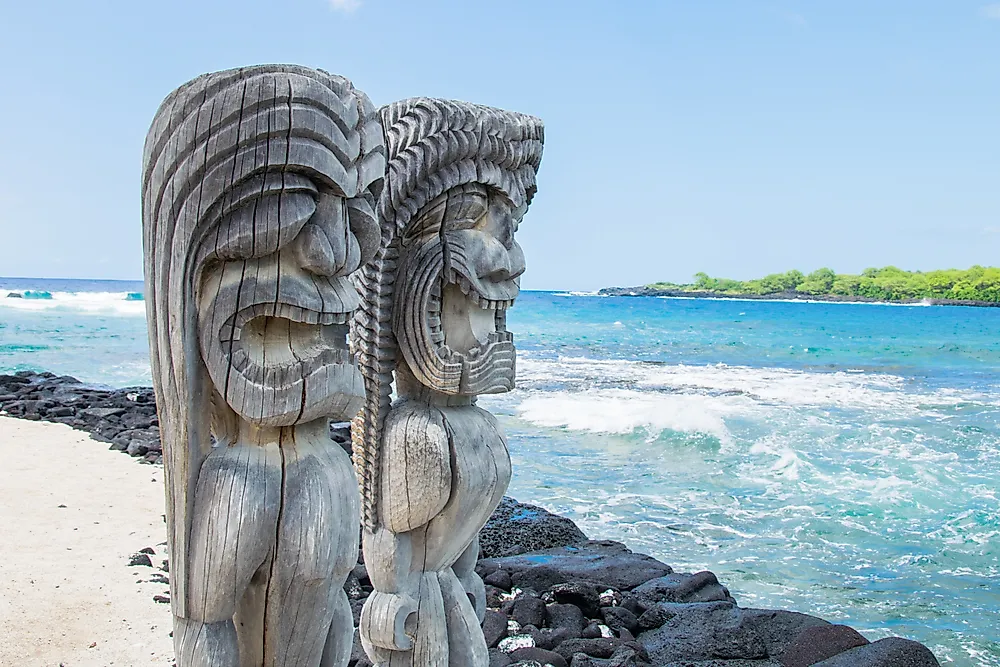Who Are The Polynesian People?

Polynesian people comprise of several Austronesian ethnicities speaking Polynesian languages. Polynesians are estimated to total 2,000,000 with the US, New Zealand, Australia, and Chile having significant populations. The Polynesian people are native populations in many Polynesian Islands located in central and southern Pacific Ocean.
History Of The Polynesian People
Scientific research has established Taiwan as the origin of the Polynesian group. Polynesians are part of the Austronesian-speakers who migrated from Taiwan and crossed to the Pacific through the Philippines, eastern Indonesia, New Guinea, and Melanesia. Analysis of the Polynesian DNA has shown that the Polynesian people are closely related to East Asians, Micronesians, and Taiwanese Aborigines. The first Polynesian ancestors settled in the Tonga, Wallis, and Futuna, and Samoa regions. These areas were not particularly habitable for humans and therefore domestic plants and animals had to be introduced. The people used the voyaging canoe to cross the Pacific. Europeans discovered the islands in the late 18th century and attempted to colonize the islands. Independence was achieved by a section of the islands after the Second World War although some colonial powers still have a degree of control in some islands (such as French Polynesia). Chile is the only Latin Country with territory in the region of Polynesia (Easter Island).
Territory Of The Polynesian People
Polynesians are indigenous populations in Hawaii, Tahiti, Easter Island, Solomon Islands, Papua New Guinea, Tonga, Tuvalu, Samoa, Cook Islands, New Zealand, Chatham Islands, French Polynesia, Wallis and Futuna, Tokelau, American Samoa, Niue, Vanuatu, New Caledonia, and two islands in the Federated States of Micronesia.
Culture And Society
When the Europeans first encountered the Polynesian Islands, they were surprised to find thriving communities with a rich cultural system. The people’s belief system was centered on gods and goddesses who were regularly venerated. There was also the concept of tapu, complete with rules and prohibitions, which were observed in Polynesian society. Violating something forbidden could lead to serious consequences such as sickness or death. It is from this meaning that the English word taboo came to be used. Polynesian communities celebrated rites of passage in a variety of ways. Tattooing rituals, for example, were carried out during puberty. Tattoos, in general, had symbolic and cultural meaning to Polynesians. Birth and death were marked by elaborate rituals which involved dances and gift-giving. The Polynesians lived in neighborhoods comprised of families living communally. It was common for cousins to marry and premarital sexual relations and polygamy took place. For food resources, Polynesians relied on fishing and horticulture. There was clear gender division of roles and women status vary from society to society. Polynesian cultures embraced myths and folklore as a way to explain the origin of people and culture.
Contemporary Polynesia
The eradication of Polynesian culture began with the arrival of European missionaries. The missionaries popularized Christianity and denounced the Polynesian way of life as pagan. The Polynesians were especially quick to adopt Christianity which is currently adhered to by 96.1% of the population. Polynesian mythology is observed by a section of the people. English and French are widely spoken alongside Polynesian languages. Several native languages have been on the brink of extinction forcing revitalization programs to be implemented such as the Hawaiian Language. The majority of the population has embraced westernization in areas such as dressing, entertainment, education, sports, and employment.











